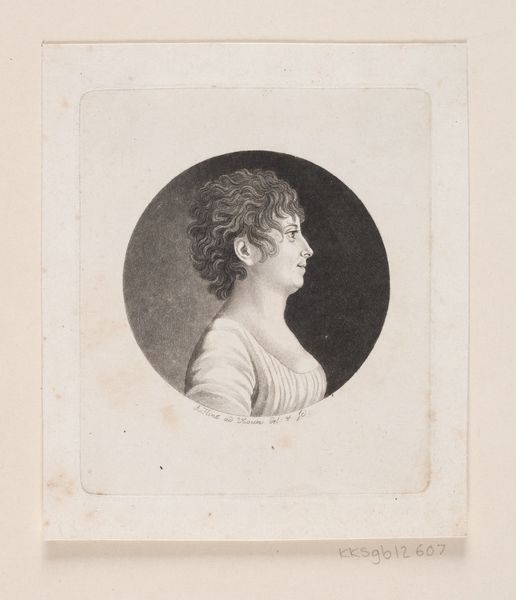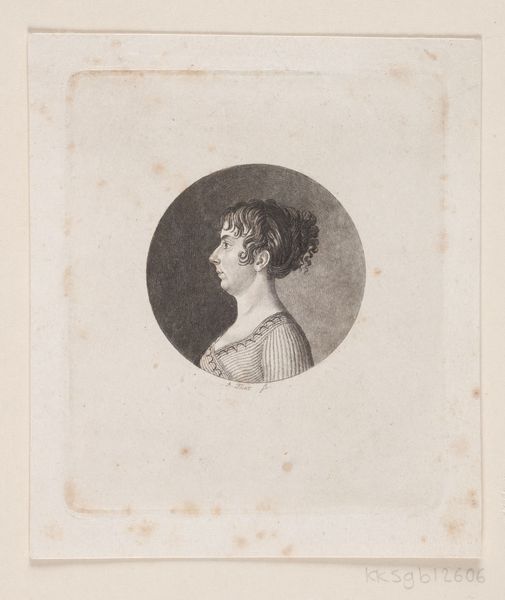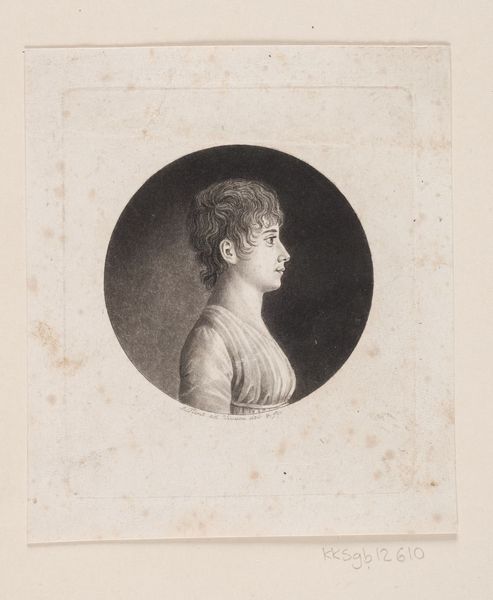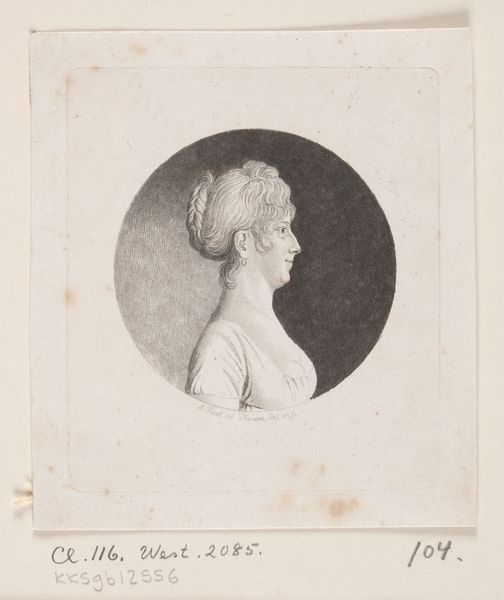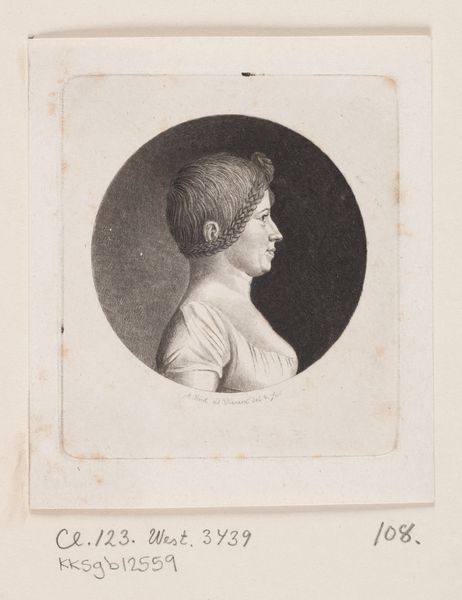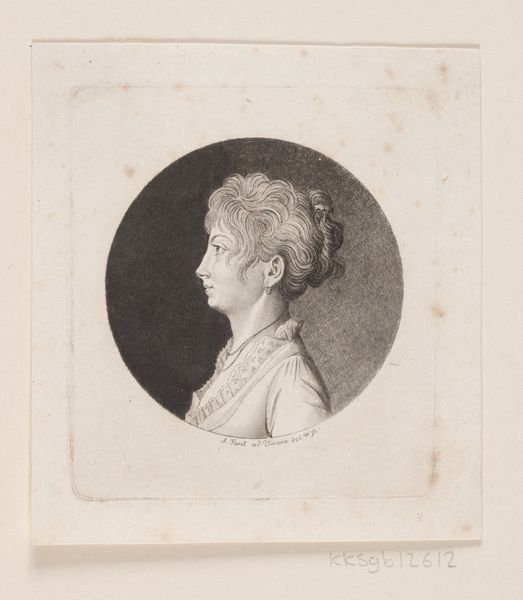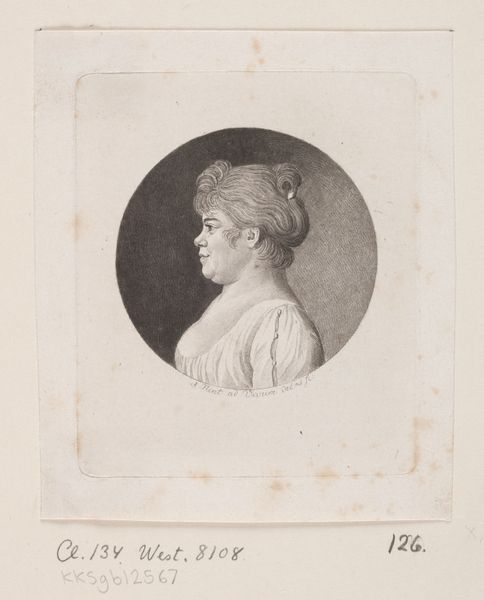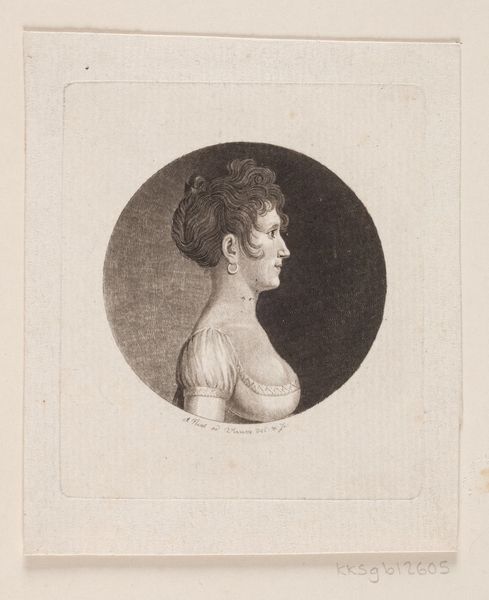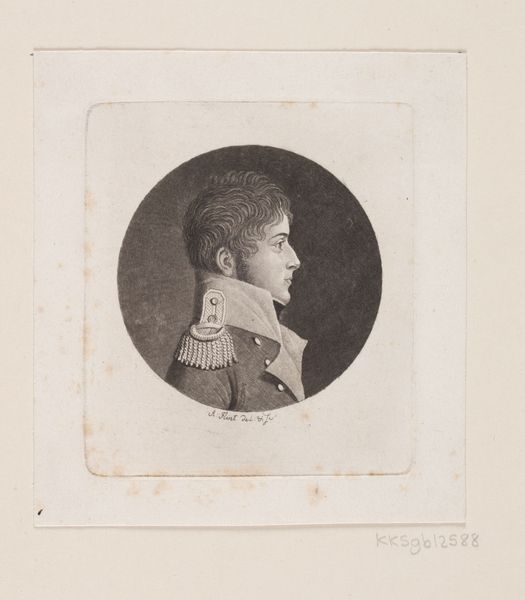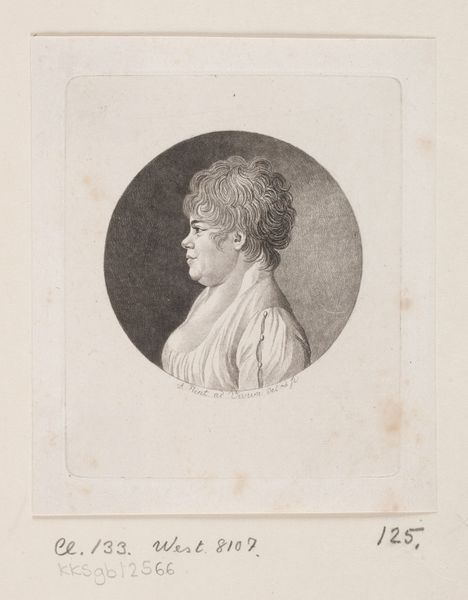
drawing, print, engraving
#
portrait
#
drawing
#
neoclacissism
# print
#
engraving
Dimensions: 61 mm (None) (billedmaal), 92 mm (height) x 80 mm (width) (plademaal)
Editor: Here we have Andreas Flint’s print, "Elisabeth D. Olsen," which the museum dates sometime between 1767 and 1824. It has a rather stark, neoclassical feel with its use of line and the portrait’s profile, doesn't it? What stands out to you in this work? Curator: The profile, contained within a circle, echoes ancient coins and cameos, a deliberate recall of classical virtue and enduring legacy. Notice how her hairstyle, while fashionable, also hints at classical styles. These visual quotations tell us that Elisabeth and the artist saw themselves participating in a long and noble history. What do you think someone viewing this then would have thought of her necklace? Editor: It looks like a relatively simple string of beads, but given your focus on symbolism, perhaps the beads are stand-ins for pearls or other precious gems, subtly alluding to wealth and status without being ostentatious? Curator: Precisely. Each element, carefully chosen, contributes to a cohesive image projecting specific virtues and social standing. How might her rather direct gaze play into this? Editor: She seems to be looking out with a sense of confidence or certainty. The artist might be conveying her inner strength. Would I be right in saying this might also show aspirations in this period? Curator: Absolutely. And her strength as a lasting matriarch as we gaze upon her now. A potent image reflecting societal values and personal identity, wouldn’t you agree? Editor: I agree, I'll certainly never see these portraits the same way again.
Comments
No comments
Be the first to comment and join the conversation on the ultimate creative platform.

